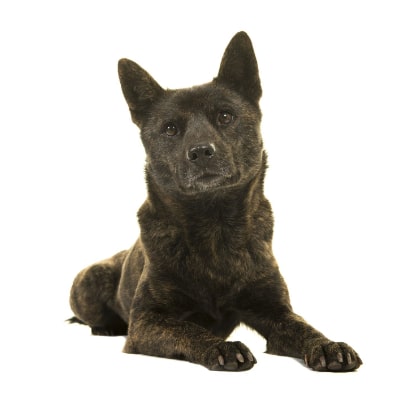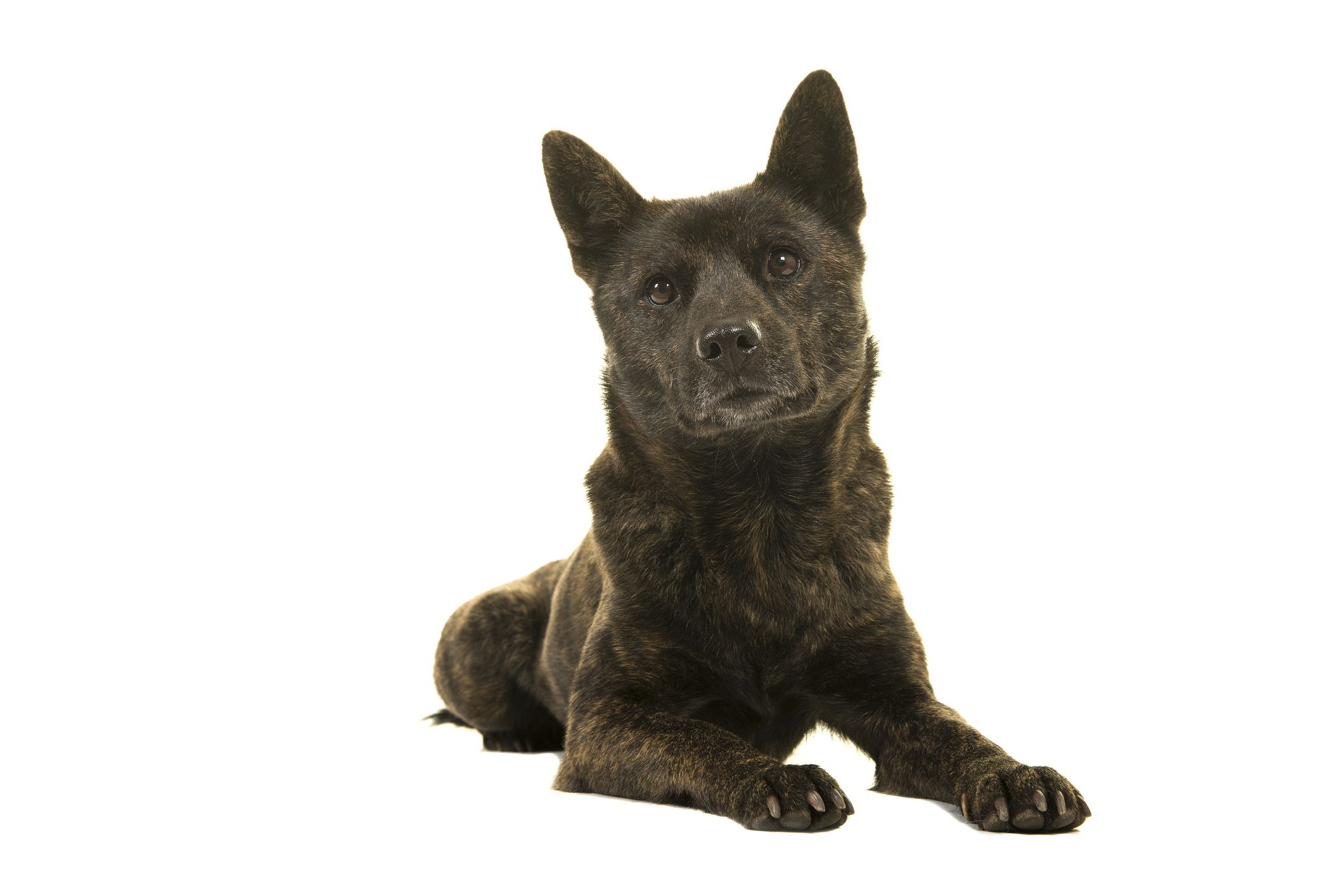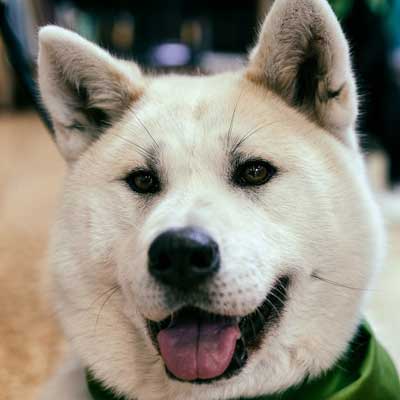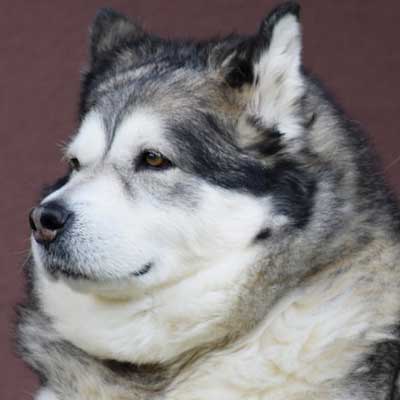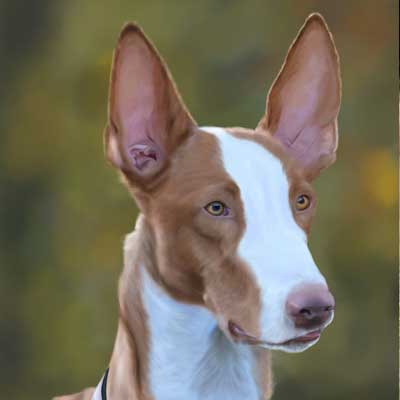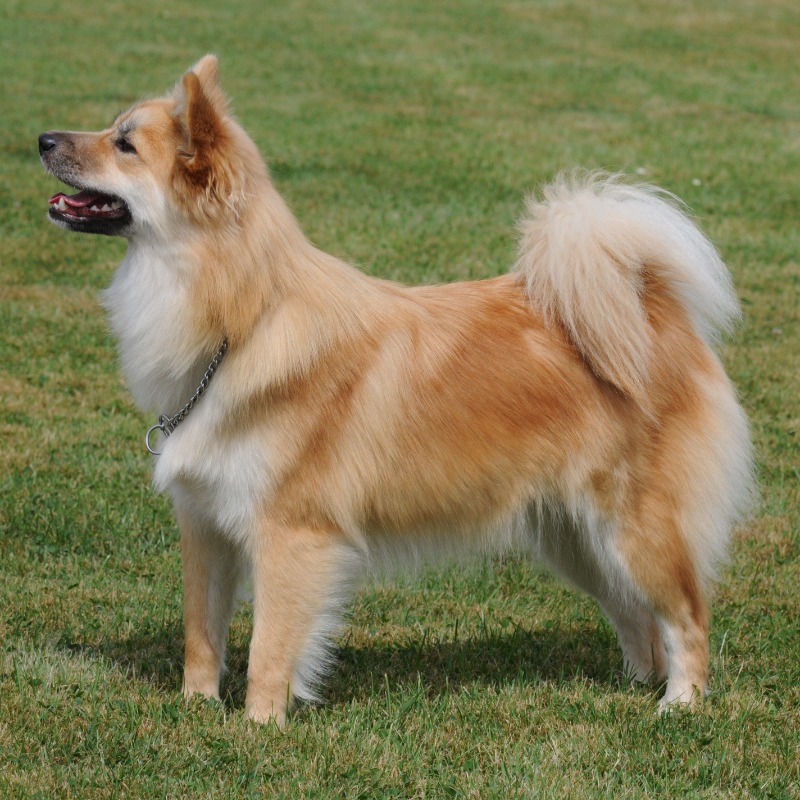Kai
A Japanese natural monument, the Kai is an ancient breed devoted to hunting wild boar
This breed originated from medium-sized dogs that existed in Japan in the ancient times.It became established as a breed in the Kai district (Yamanashi Prefecture), which is surrounded by mountains. Another name for this breed is « Kai tora-ken ». A distinguishing feature in this dog is its brindled coat. These dogs are used mainly for hunting wild boar and deer.Their strong inclination to form a pack is thought to contribute towards maintaining the purity of the breed. The breed was designated as a « natural monument » in 1934.
-
Head - cranial region
Skull: Forehead broad.
Stop: Abrupt with slight furrow. -
Head - facial region
Nose: Black, nasal bridge straight.
Muzzle: Pointed, not very long, but moderately thick.
Lips: Tight.
Jaws/Teeth: Strong with a scissor bite.
Cheeks: Well developed.
Eyes: Nearly triangular and dark brown in colour. The outer corners of the eyes are slightly upturned.
Ears: Triangular, slightly inclining forward and firmly pricked. -
Neck
Thick, powerful and muscular. -
Body
Withers: High.
Back: Straight and short.
Loin: Broad and muscular.
Chest: Deep, ribs moderately sprung.
Underline and belly: Slightly tucked up. -
Tail
Set on high, thick, vigorously curled or carried curved like a sickle over the back.
Tip nearly reaching the hocks when let down. -
Forequarters
Shoulders: Moderately sloping with developed muscles.
Upper arm: Forming a moderate angle with shoulder blade.
Elbows: Close to the body.
Forearm: Straight, heavy and muscular.
Metacarpus (Pastern): Slightly oblique.
Forefeet: Toes well arched and tightly knit; pads thick and elastic; nails hard and preferably dark in colour. -
Hindquarters
General appearance: Well developed, strong and moderately angulated.
Hocks: Tough and elastic.
Hind feet: Toes well arched and tightly knit; pads thick and elastic; nails hard and preferably dark in colour.
-
Gait / Movement
Light and resilient. -
Coat - hair
Outer coat harsh and straight; undercoat soft and dense. The hair on the tail is fairly long and off-standing.
-
Coat - color
Black brindle, red brindle and brindle. As a feature of this breed, solid colour in puppyhood may turn brindle as the dog grows. -
Size
Height at withers: Males 50 cm.
Females 45 cm.
There is a tolerance of + 3 cm. -
Faults
Any departure from the foregoing points should be considered a fault and the seriousness with which the fault should be regarded should be in exact proportion to its degree and its effect
upon the health and welfare of the dog.
• Lack of sexual dimorphism.
• Light-coloured nose.
• Slightly overshot or undershot mouth.
• Light-coloured eyes.
• Long or short hair.
• Shyness. -
Disqualifying faults
• Aggressive or overly shy.
• Any dog clearly showing physical or behavioural abnormalities.
• Extremely overshot or undershot mouth.
• Ears not pricked.
• Hanging tail, short tail.
• Faded colour.
• Coat with many white spots.
• Pinto colour.
N.B.:
• Male animals should have two apparently normal testicles fully descended into the scrotum.
• Only functionally and clinically healthy dogs, with breed typical conformation, should be used for breeding.

